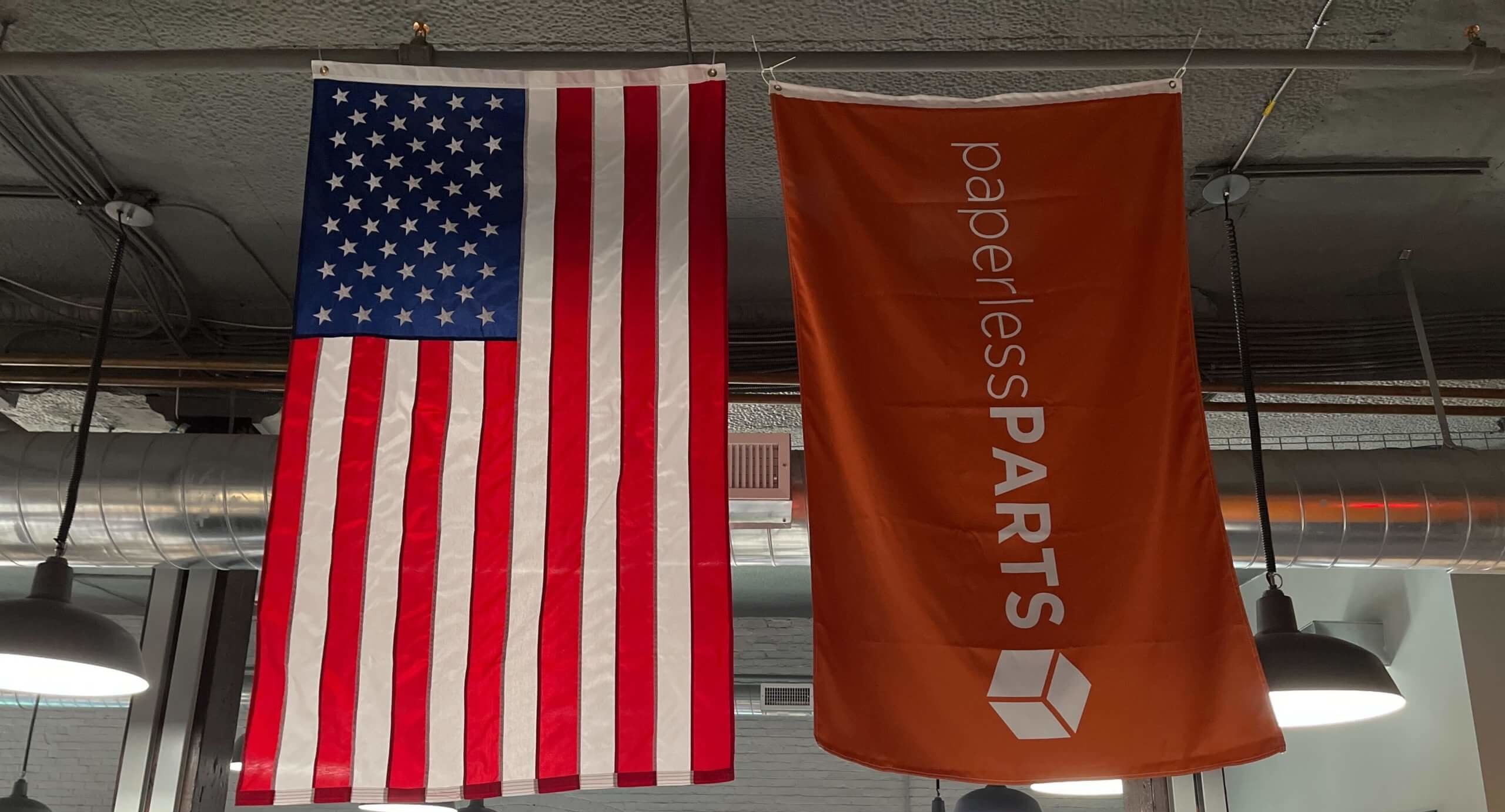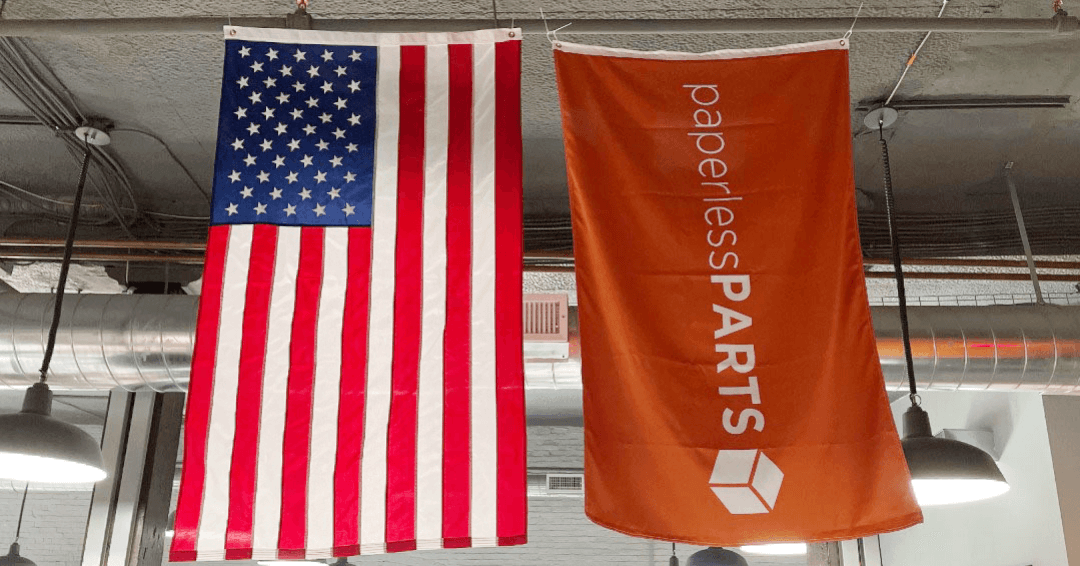
How U.S. Manufacturers Can Brace the Backbone of America
As the threat of the Axis advanced and the global conflict of WWII loomed near, an urgent matter pressed: the challenge of landing millions of Allied troops on Axis-controlled shores.
In response, NOLA-based Higgins Industries sprung into action. The unassuming U.S. manufacturer of watercraft for the Louisiana petro industry adapted its flagship product into what would become the Navy’s iconic landing craft of the era, piecing together a colossal maritime empire in an impossibly short period of time.
By the end of the war, the firm had produced more than 20,000 boats and employed more than 30,000 people from all walks of life across a ubiquitous network of seven plants in the city. The importance of this mobilization of Andrew Higgins’ firm cannot be understated; in the words of General Eisenhower, he was, “the man who won the war for us.”
History Repeating Itself
Fast-forward some 80 odd years and we find ourselves in a similar national predicament, where the need for our manufacturing independence is once again showing face.
Supply chain turmoil—caused by a global pandemic and the most significant military conflict Europe has seen since WWII—means that “it’s more attractive than ever to be less economically dependent on others,” writes Ben Winck of Business Insider. One interviewee in the same article called the war in Ukraine a “quite fundamental” pivot point from globalization to independence. Soaring prices of oil and other commodities from interrupted supply have us rethinking our dependence on other countries for our basic necessities. With independence in the spotlight, it’s more important than ever to refocus our attention on a robust U.S. manufacturing sector here at home.
It is without doubt that American manufacturers were, are, and will always be crucial in maintaining our standard of living and global competitiveness. Yet, organizations like Mr. Higgins’ and events like the Russia-Ukraine War are just chapters in the history of U.S. manufacturing. The scale and presence of production in American society is profound:
⚬ In Q1 2021, manufacturing was the second highest-contributing sector towards GDP at $6.4 trillion— nearly 30% of the whole $22 trillion pie—and this measurement fails to capture the far-reaching demand for goods and services that it creates in other industries (Forbes).
⚬ The National Association of Manufacturers estimates that for every $1 spent in manufacturing, another $2.68 is added to the economy: the third highest multiplier effect of any industrial sector (National Association of Manufacturers).
⚬ As of April 2022, the manufacturing sector employs more than 12.7 million people (National Association of Manufacturers).
⚬ The manufacturing industry is a catalyst for innovation, accounting for nearly 58% of all private sector R&D (National Association of Manufacturers).
The “backbone of America” as it is often called puts technology in the hands of millions and provides the economic foundation that continuously improves our quality of life and keeps the American Dream alive.

Looking Forward
There are challenges on the horizon that threaten the strength of this backbone, and when you consider its importance, we have no choice but to build and protect it at all costs.
Deloitte estimates that by 2030, there will be 4 million manufacturing jobs to fill, “2.1 of which could go unfilled if we do not inspire more people to pursue modern manufacturing careers.” In fact, they predict that this labor shortage could cost the U.S. “$1 trillion in 2030 alone.” On a similar note, according to a recent article in The Atlantic, the U.S. population grew at its slowest pace in history in 2021.
We lean on organizations like Higgins and pandemic PPE saviors when times are tough, and the need will surely surface again as history rhymes. Which begs the question: what are we doing to strengthen our future resilience? It all begins with investments in our people, and then in their places of production.
Our People
The Technology and Manufacturing Association (TMA) of Illinois is a nearly 100-year-old organization with 16 full-time employees dedicated to their state’s advancement of manufacturing. Their robust training program includes instruction both onsite (thanks to a state-of-the-art training facility opened in 2015) and online (TMA-U enables remote learning of several relevant subjects), as well as workforce development to connect manufacturers with top industrial talent and those entering out of high school. This type of organization that invests in the future of the local manufacturing industry is a step in the right direction towards combating the labor shortage.
Our Places of Production
The events of the past couple of years have shed light on the strategic challenges of offshore manufacturing. There is opportunity and incentive to build here; Samsung, an industrial giant, is among many leading the charge in infrastructure. Their November 2021 announcement of the construction of a $17 billion chip factory in the Austin area is, “the largest foreign investment in the state of Texas, ever,” according to Gov. Greg Abbott. The plant is expected to be operational in the second half of 2024 and employ over 2,000 people. These investments are key in sustaining a future of opportunity and abundance for all Americans.
Brian Kippen, CEO of KAD Models and Prototypes, says that, “manufacturing leaders and shop owners need to invest in the education of our employees, proactively adopt technologies that can advance our services, and let the public know we’re here and we’re hiring—before it’s too late.” Can we really afford otherwise?
Springing Into Action
If you’re a part of the critical and fast-changing world of U.S. manufacturing, it’s time to start thinking about the impact your business has on a larger scale. Considering everything mentioned in this blog post, investing in your workforce and embracing new technology are what will enable you to succeed. The more manufacturing businesses succeed, the stronger the backbone.
More specifically, if you’re a custom manufacturer, Paperless Parts helps you kill those two birds (among many others) with one stone. Not only does it make training employees easier and allow you to codify tribal knowledge for stress-free succession planning, but it automates your quoting process from file submission to client acceptance to allow you to operate more efficiently and create room to grow.
See how Paperless Parts can help you spring into action to better support the American manufacturing industry today on a free, live demo. Click here to get started.
Want to learn how Brian Kippen saves 75 hours per month quoting with Paperless Parts?
—
Max Kinney comes from a background in business development in the machine tool industry. After graduating with a Mechanical Engineering degree from UMass Amherst, Max started his career at The Robert E. Morris Company, delivering high quality machining equipment and turnkey manufacturing solutions to custom part manufacturers. Max views his decision to join the team at Paperless Parts in December 2021 as a challenge for himself and a unique opportunity to help American manufacturers solve a challenge of their own. In his free time, you can find him enjoying The Great Outdoors and spending time with family and friends.
